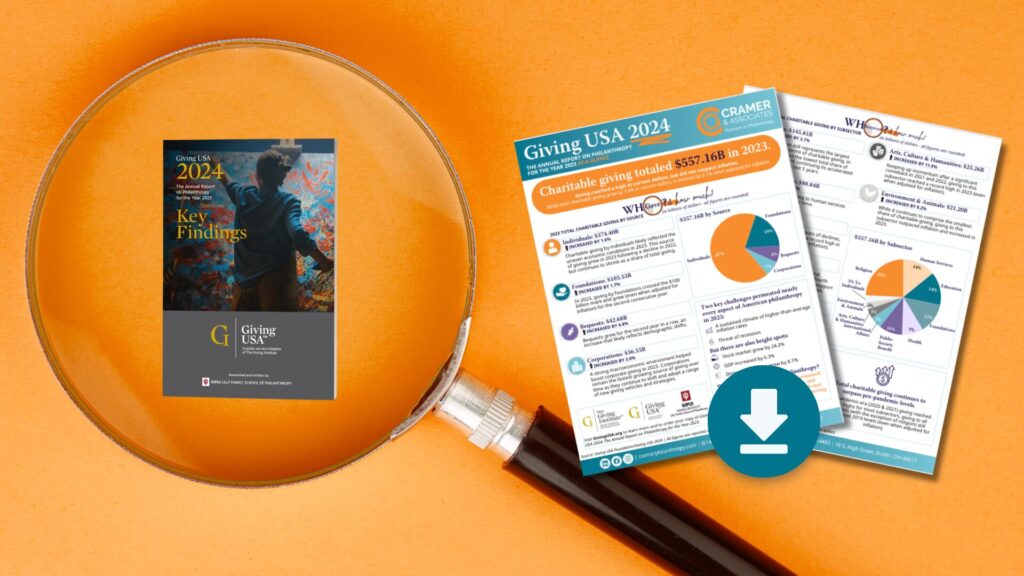In today’s competitive environment for donors’ dollars, incorporating innovative ideas and strategies into our work is crucial. Cutting-edge tools and new perspectives increase our impact for our nonprofit partners. The Cramer team has always prioritized lifelong learning and values our relationship with the Association of Fundraising Professionals. That’s why we invested in taking five of our team members to AFP ICON 2023 this year, America’s #1 fundraising conference.
Team Cramer spent three action-packed days at the conference in New Orleans, Louisiana. We attended over 30 educational sessions where we learned alongside 3,648 of our talented peers from 26 countries around the globe.
If you couldn’t attend AFP ICON 2023, don’t worry! We compiled five key takeaways:
- Innovation Is Not an Option – It’s a Necessity!
- Level Up Your Leadership
- Nurture a Healthy Culture to Lessen Staff Turnover and Burnout
- Being the “Best Kept Secret” Is Leaving Money on the Table
- Old, Male, and Stale! Why Do We Keep Focusing on the Same Donors and Expecting Something New?
1. Innovation Is Not an Option—It’s a Necessity!
“The difference between missing and achieving our 2023 growth goals is effective innovation.”
– Cameron Ripley (2)
Every nonprofit professional should be keeping up with new tools and ideas and considering how they can be integrated into their development program to impact their mission. In our rapidly changing world, now is the time to embrace new technology and methods.
Emerging AI tools like ChatGPT were a hot topic during AFP ICON, and we can see why! While ChatGPT might feel a little intimidating, it is worth investing your time and energy in learning how to use it effectively. In the long run, it can save you time, money, and brain space. For example, do you need help analyzing data? ChatGPT can help. Need to create a draft solicitation for your next email campaign? ChatGPT can help with that, too. How about generating some content ideas for your next newsletter? ChatGPT to the rescue! When used properly, this AI tool can be a huge help for overwhelmed individuals and teams. (3)
“AI will not replace humans. However, humans who know how to use AI at work will replace those who don’t.”
– Cameron Ripley (2)
Volunteer burnout occurs far too frequently in nonprofits. Whether it’s Board members whose terms go on and on, or campaign volunteers engaged in a 2+ year capital campaign. New and innovative leadership structures are just as important as new technology. Author Amy Eisenstein, ACFRE, CEO and Co-Founder of Capital Campaign Pro, offered a unique perspective on how to structure campaign committees in her pre-AFP ICON session: she suggests ditching a singular campaign committee and implementing a series of smaller committees throughout your campaign. Think of it like a relay race, where one committee hands off their successful sprint to the next. This method creates more opportunities to engage prospects, prevents volunteer burnout, and increases momentum. (4)
Action steps:
- Examine your organization’s operations, looking for areas of frustration where new tools and systems could make a difference.
- Create an innovation team dedicated to seeking out and testing new ideas, allowing time and space to beta test solutions. (2)
Resources:
- Website: ChatGPT by OpenAI
- Book: Train Your Board (and Everyone Else) to Raise Money by Andrea Kihlstedt and Andy Robinson
- Book: The Generosity Crisis by Brian Crimmins, Nathan Chappell, and Michael Ashley
2. Level Up Your Leadership
“Successful fundraising happens when the Development Director and the Executive Director become an ‘us.’”
– Joan Garry
Did you know that the average nonprofit CEO spends less than 5% of their time on fundraising, even though fundraising is the engine that runs nonprofits? (5) As a development professional, you can increase this percentage by engaging your leadership team in the fundraising and development processes.
At the conference we learned two ways you can level up your leadership internally to help raise more money: 1) Master the fine art of managing up, and 2) Boost board engagement. Regularly communicating with your CEO and board members about your fundraising goals and expectations for them is essential.
Action steps:
- Board members are 11 times more likely to be involved in fundraising when they understand that it will be expected of them. While most board job descriptions include fundraising, consider also having members of your development team regularly attend board meetings to share opportunities for board members to use their knowledge and expertise to help meet your fundraising goals. (6)
- Advocate for regularly schedule meetings with your CEO so you can keep them informed, build their confidence with current fundraising activities, and activate them into your fundraising tactics when needed. If they are averse to attending solicitation meetings, try getting their feet wet by bringing them along on cultivation or “advice” visits. (5)
Resource:
- Article: Help! My Executive Director Hates Fundraising! by Joan Garry
3. Nurture a Healthy Culture to Lessen Staff Turnover and Burnout
“Staff turnover and the talent wars will continue into 2023. Initial findings note staff turnover as a top nonprofit challenge, jumping from 3.9% to 12.5%.”
– Cameron Ripley (2)
We all know that the pandemic has left many in the nonprofit sector feeling exhausted and sometimes hopeless. We also know that strong organizational health can alleviate these feelings. It has to start at the top with organizational leaders who are constantly aware and attentive to your organization’s culture. Creating a culture of effective communication, clarity, and support is more important than ever. (7) Organizations that foster a positive working environment by monitoring their team’s workload and capacity, keeping lines of communication open, and developing a strong culture that is built on trust will raise more money in the long run! (1)
Action steps:
- Celebrate wins at work—both big and small!
- Practice Brené Brown’s mantra, “Clear is kind,” in your daily conversations, your work, and your expectations.
- Ensure that your team understands your mission and the collective impact they make through their work.
Resources:
- Book: Dare to Lead by Brené Brown
- Study: Meaningful Philanthropy in the 21st Century: The Role of Self by the Institute for Sustainable Philanthropy
4. Being the “Best Kept Secret” Is Leaving Money on the Table
“You must surpass the minimum effective marketing dose.”
– Cameron Ripley (2)
If we had a dollar for every time we heard a CEO, board members, or development director describe their nonprofit as “the best kept secret in town,” we could all retire and become philanthropists like MacKenzie Scott.
In his presentation at AFP ICON, Cameron Ripley stated, “Effective innovation is a critical component of modern nonprofit marketing, especially in today’s era of constant digital transformation.” (2)
Nonprofits must be open to new marketing platforms, channels, and tactics. And your marketing should never be siloed. It should be a collaborative effort, fully integrated with fundraising.
Your messaging should appeal to donors and inspire them to support your mission. (8) With current and potential donors across different generations giving, the importance of marketing your mission frequently across multiple channels cannot be overstated. While email and social media remain the most important marketing channels, short-form video continues to prevail as the most effective tool in telling your organization’s story—with the highest return on investment. (2)
Action steps:
- With input from your leadership, marketing, and development teams, develop a multi-faceted marketing and communications plan that outlines your organization’s goals, key messages, channels, and priorities. This plan is a living, breathing document, so revisit and revise it regularly.
- Segment your audiences to simplify communication. From new and recurring donors, to annual event attendees, to volunteers—everyone needs to hear a personal message from your organization.
- Test new channels and tactics without fear of failure. Have candid conversations with your leadership about new strategies you are exploring and your realistic expectations. As long as you are learning and refining your marketing strategy to reach more supporters with relevant content, your marketing efforts are succeeding.
Resources:
- Report: The 2023 Nonprofit Acceleration Report by Community Boost
- Website: Canva.com. CanvaPro’s design tools with AI integration are free for nonprofits.
5. Old, Male, and Stale! Why Do We Keep Focusing on the Same Donors and Expecting Something New?
“Donors come in all shapes and colors, but fundraising continues to focus on the usual suspects. Relying on the same donors is unsustainable.”
– Lisa Greer (11)
Several eye-opening statistics presented at AFP ICON clearly made the case for considering more diverse donor groups. Lisa Greer said it perfectly: “We’re all trying to argue over the same parts of the pie, but there’s good news…we can increase the size of the pie.” (11)
Research shows that by 2025 women are expected to hold $110 trillion in wealth, and in 2060 minority groups will make up the majority of the population. Studies have proven that women are more likely to give, and give more, than their male counterparts, and boards with more women have higher engagement in fundraising and advocacy. (13)
Campaigns and sponsorship opportunities also need to consider changing the standard naming and recognition opportunities in order to appeal to a larger and more diverse pool of donors. Traditional practices often communicate a sense of ownership and power that can be exclusionary, and they don’t always include community input or reflect true donor commitment. (14)
The bottom line: if your organization’s fundraising strategies fail to consider the perspectives of large groups of people, you will continue to miss out on their support and their gifts.
Action steps:
- Talk to diverse donors—consider gender, race, ethnicity, age, and other attributes—and incorporate their feedback and perspectives into your cultivation and development strategies.
- Revisit your naming and recognition policies and identify potential areas for increased inclusivity and opportunity. Be sure to include your staff, donors, and volunteers in the conversation to ensure it is informed by diverse perspectives, and envision new naming opportunities beyond just capital. (14)
Resources:
- Case Study: Women-Led Fundraising Effort Reaps Big Rewards for Dartmouth by Maria Di Mento
- Research: Women Give 2019 | Gender and Giving Across Communities of Color by the IUPUI Women’s Philanthropy Institute at the Lilly Family School of Philanthropy
- Book: Philanthropy Revolution by Lisa Greer
References
- Salvatore Salpietro and Michael Johnston. The 2023 Fundraiser’s Outlook: 6 Strategic Themes to Drive Your Fundraising Success. AFP ICON 2023.
- Cameron Ripley. The Future is Digital: Learnings from the 2023 Nonprofit Acceleration Report. AFP ICON 2023.
- Nathan Chappell. The Promise and Perils of ChatGPT for the Nonprofit Sector. AFP Icon 2023.
- Amy Eisenstein. Capital Campaign Fundraising: Ready, Set, Go! AFP Icon 2023 Pre-Conference Session. AFP ICON 2023.
- Roselle Ungar. Managing Up: Turning Your CEO into a Fundraising Rock Star. AFP Icon 2023.
- Bill Stanczykiewicz. Board Engagement and Fundraising. AFP ICON 2023.
- Natalie Gupton and Amy Wolfe. We Are All Not Ok – Building Cultures that Support, Heal and Strengthen. AFP ICON 2023.
- Noah Barnett. From Unreliable Magic to Good Marketing. AFP ICON 2023.
- JC Patrick and Alice Ferris. Pulling the Heartstrings: Writing Your Story Effectively. AFP ICON 2023.
- Rich Waldmann. Fundraising: Stewarding Sustaining Givers. AFP ICON 2023.
- Lisa Greer. The Future of Fundraising: Why Philanthropy is in Trouble – and How to Save It. AFP ICON 2023.
- Irshad Osman, Ann Rosenfield and Lori Guenther Reesor. Faith & Fundraising: Three Traditions, Unlimited Questions. AFP ICON 2023.
- LaKoya Gardner, Jeannie Sager and Jacqueline Ackerman. Inclusive Philanthropy: Who Gives, How, and With What Impact? AFP ICON 2023.
- Melissa Berliner and Sarah Marino. Moving Beyond Bricks and Plaques: New Perspectives on Building Inclusive Naming & Recognition Practices. AFP ICON 2023.
- Mark Chilutti. A Tale of Two Campaigns…and How the One that Failed Led Us to Future Success! AFP ICON 2023.




